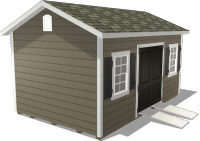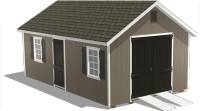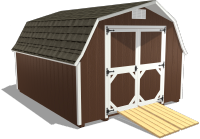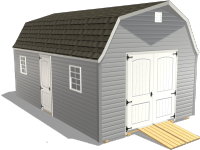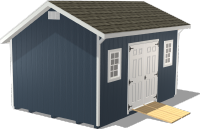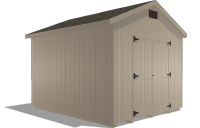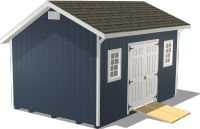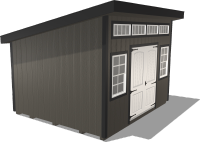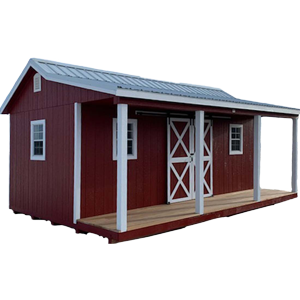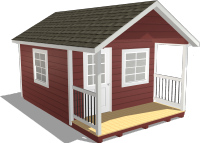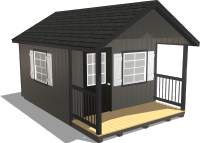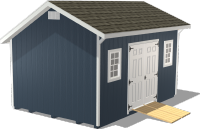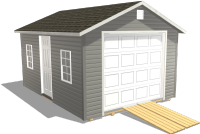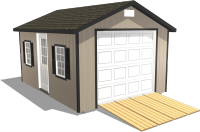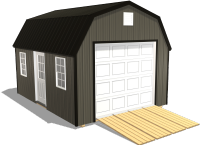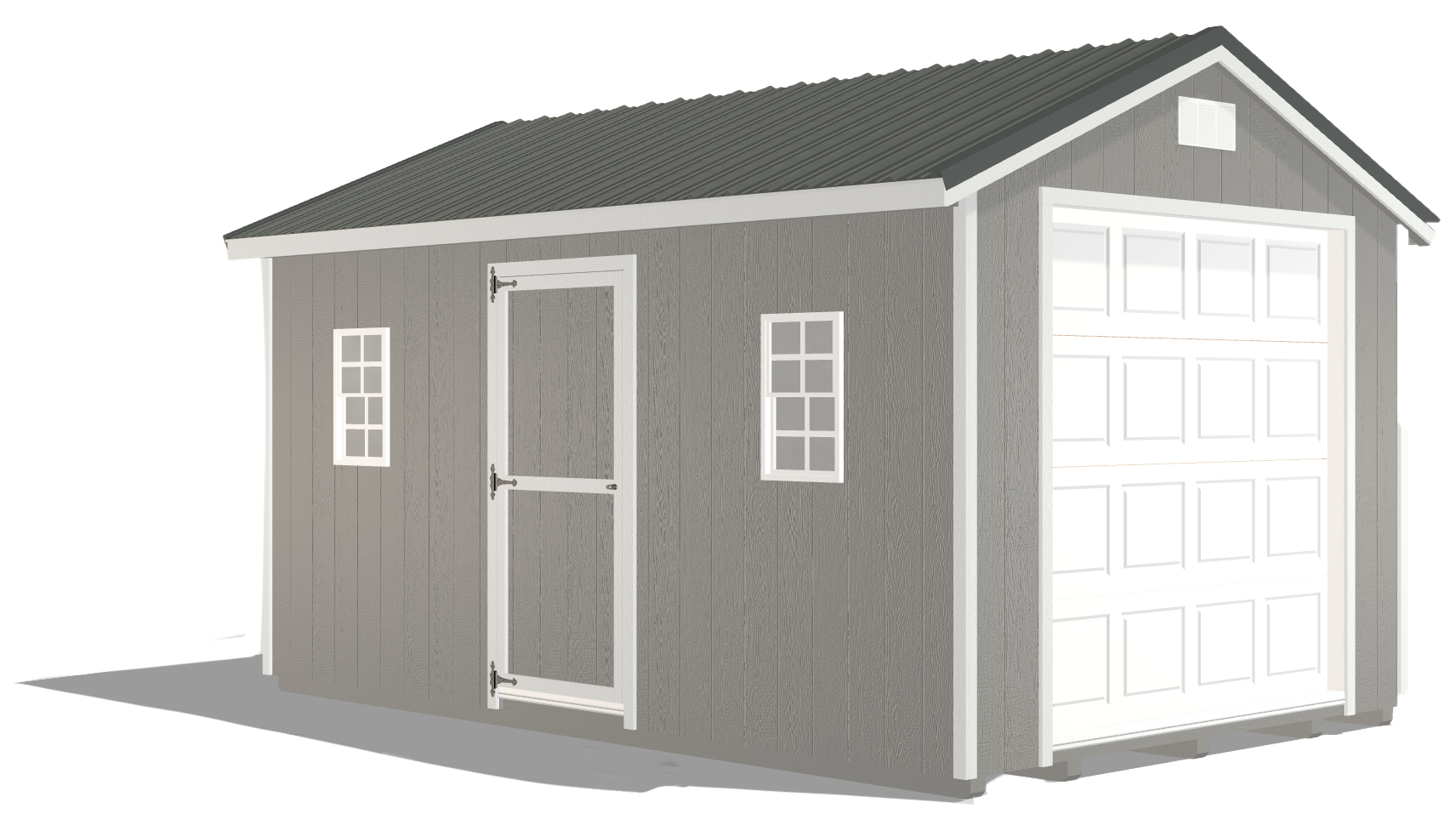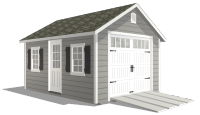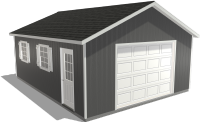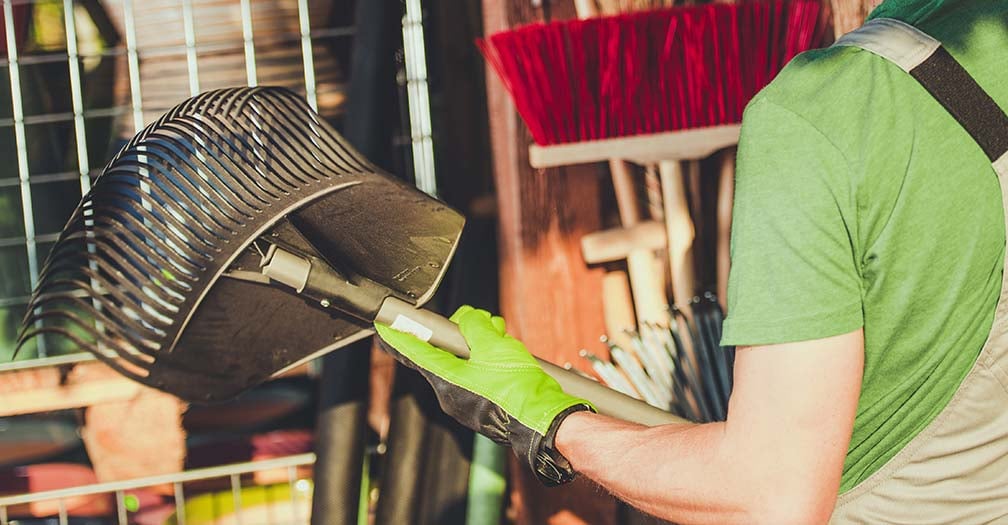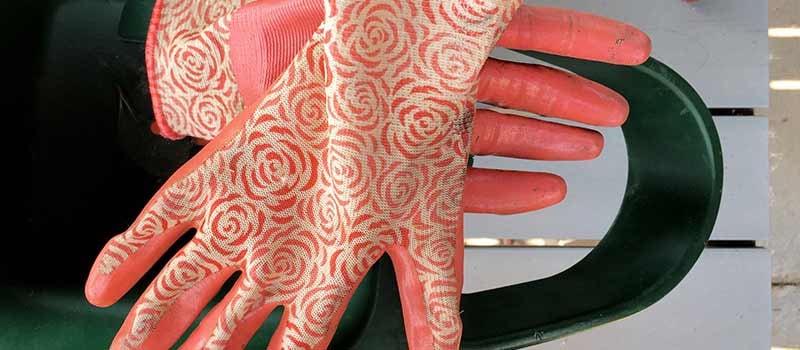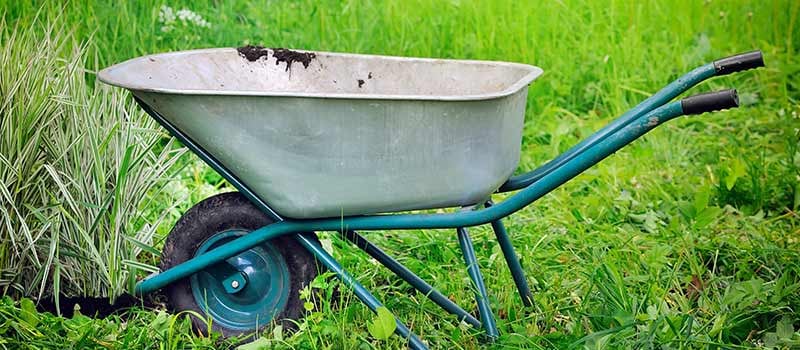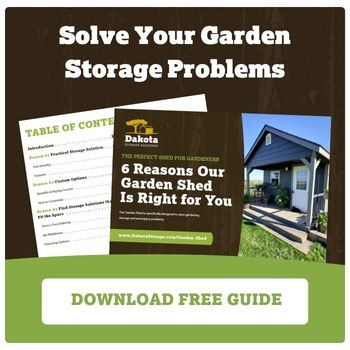10 Garden Tools That Every Gardener Should Have
by Dakota Storage Buildings, on February 23, 2021
Growing outdoor plants is easier and more successful with the right tools.
Gardening tools are crucial for performing different gardening jobs, including trimming, planting, digging, and cutting — however, one doesn't need to own a vast collection. Having the right tools can make caring for a garden easier and more enjoyable.
With so many garden tools and accessories out there, how do you choose the best ones? Which go-to tools do seasoned gardeners recommend and why?
It's easy to go overboard, getting items that end up being rarely used. If you're new to gardening or just want to update your arsenal, here are ten essential tools of the trade. To avoid nonessentials, stick to this list, and you'll be in great shape.
1. Gardening Attire
Sun Protection: Due to extensive sunlight exposure, gardeners are at higher risk for sunburn, sun damage, and skin cancer, but there are simple and effective ways to protect against these. First, wear sunscreen that's at least SPF 15 to protect against damaging UVA and UVB rays. Second, wear a hat. When choosing a hat, choose one with a vented crown so body heat can escape, a wide brim to block the sun, and a beaded string you can tighten on windy days.
Hand Protection: Quality leather gardening gloves are an essential tool that every gardener will use. Gloves will keep your hands dry, improve your grip when trying to pull out stubborn weeds, and protect yourself from bites and splinters. If leather isn't the right fit for you, try nitrile-coated gloves. Nitrile gloves offer excellent dexterity, keeps hands cool, and are machine washable. Nitriles aren't warm enough for cold-weather gardening, though, so you may also want to invest in a sturdy pair of lined waterproof work gloves.
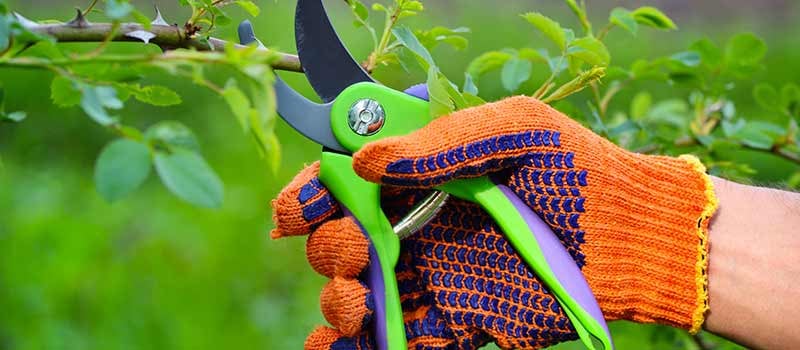
2. Pruners
Sharp pruners are essential for pruning, trimming, and shaping shrubs, roses, vegetables, fruit trees, and more. It's one tool you'll reach for again and again. Many gardeners wear them on their belts to keep them close at hand. Choose pruning shears that fit your hands comfortably and can be easily sharpened.
A high-quality pair of bypass pruners are best for cutting live wood and delivering clean cuts versus an anvil pruner. Pick the right fit for your hand and make sure that the tension isn't too much for your grip. Pruning can be a pain if your hands are cramping from using pruners that have too much tension.
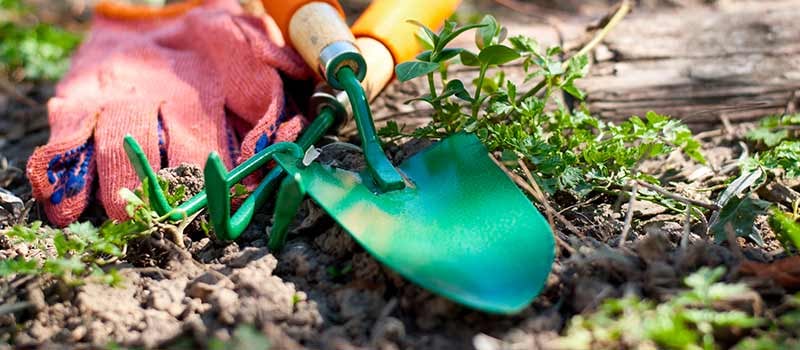
3. Trowel
Because sharp, pointed garden trowels cut through stubborn roots and make digging small holes a cinch, they are ideal for planting bulbs, taking out weeds, and transplanting bedded plants into pots. Flat trowel blades work better on weeds with long taproots. Wider trowel blades and scoop-shaped blades work best for digging up small plants, digging holes for perennials, or scooping up soil when potting plants.
Like other hand tools, buy a trowel that's high-quality and look for a handle that perfectly fits your hand. Trowels forged from stainless steel, or at least with a stainless steel head, are more durable and will last longer.
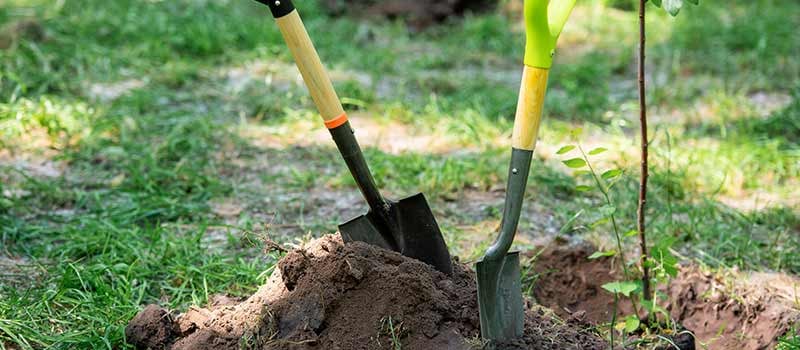
4. Shovel
A traditional shovel works well to turn the soil in a vegetable garden, but don't overlook specialized shovels — like a sharpshooter spading shovel (with a narrow blade for working in established beds and rocky soil) or a Kombi shovel (with a toothed blade ideal for digging in heavy clay).
Doing back-breaking work like gardening can do a number on your hands, arms, back, and shoulders. If you choose a shovel with an ergonomic handle, you're more likely to work for longer and more comfortably, avoiding some of the common aches and pains associated with gardening. Also, look for steel or aluminum products as they will have a longer life than those made of plastic.
As with any long-handled tool, make sure it is the right heaviness and height for your body type. If you're doing raised bed gardening, choose smaller, short-handed versions of shovels.
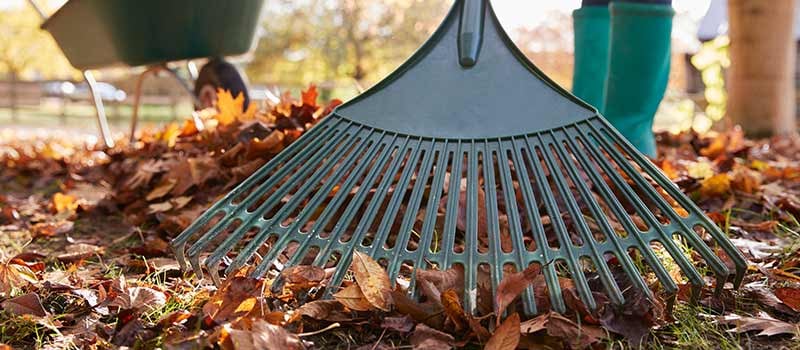
5. Garden Fork & Rake
Garden Fork: With the looks of a pitchfork, a garden fork is a tool with a handle and several (usually four) short, sturdy tines. It's used for loosening, lifting, and turning over the soil as well as breaking up clods and sifting out stones. Forks with a slight curve to the spines are useful for scooping mulch or turning compost piles. In raised beds, you can use a garden fork to loosen and aerate the soil before planting. Generally speaking, garden forks are better for digging into dense soil than shovels or spades.
In general, straight tines are better for digging in compacted, rocky, or clay soil. Square tines are stronger than flat tines, which can bend when they hit a rock or root. Look for a quality stainless steel garden fork with square tines that resist rusting and an ergonomic handle with a non-slip grip.
Rake: While garden forks and rakes can be used interchangeably, they were created to serve different purposes. A standard rake comes in handy for working soil and smoothing out beds before planting. When leaves and debris fall, your sturdy rake is there to whisk them away.
Rakes come in various styles and sizes, but a great starter is a standard leaf rake. As you shop for rakes, keep in mind that steel tines are stronger but can be rougher on lawns and delicate plants than plastic tines.
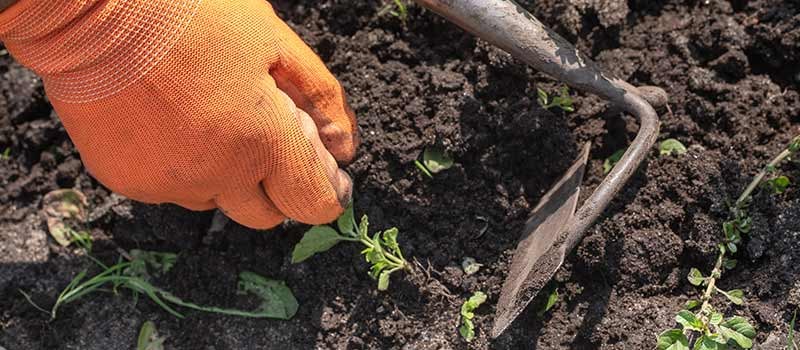
6. Hoe
A hoe is a go-to tool for weeding and working soil, especially in vegetable gardens. If you're weeding an entire garden, removing unwanted roots, moving around a lot of oil, or digging trenches, a garden hoe is your best friend.
Your garden will dictate what type of hoe is best for you. A veggie garden may require a sturdy, wide hoe. Weeding hoes have an open square head and are pushed back and forth under the soil surface to cut top growth. Flat hoes are good for turning the soil in rows in vegetable gardens. If you have perennial gardens, a more delicate hoe with a thinner blade may be required.
As with all of our recommendations, invest in a quality hoe with a comfortable handle and long reach.
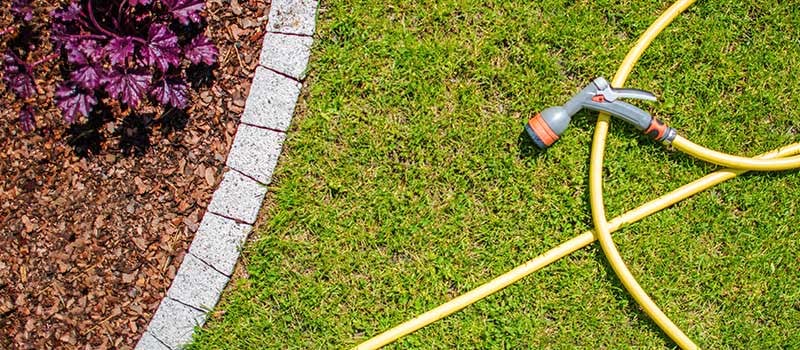
7. Garden Hose
A garden hose is an essential tool for any gardener. The length of hose you choose will depend on the size of your yard. However, a ⅝" diameter hose should give you plenty of water flow regardless of yard size. A kink-free hose that has an adjustable nozzle with various sprayer settings offers even greater convenience. Attach a sturdy hose wheel on the side of your garden shed for easy access and storage — and you're set!
8. Wheelbarrow
Every gardener needs a wheelbarrow or garden cart to haul plants, garden tools, and materials like soil, compost, mulch, etc.
Invest in a higher grade construction-type wheelbarrow with a strong bucket so you'll be able to use it for years to come. Look for quality brands like Gorilla Carts, Kobalt, and True Temper with at least a 300lbs capacity, welded joints, solid nuts and bolts, and a wide air-filled wheel for easy all-terrain use.
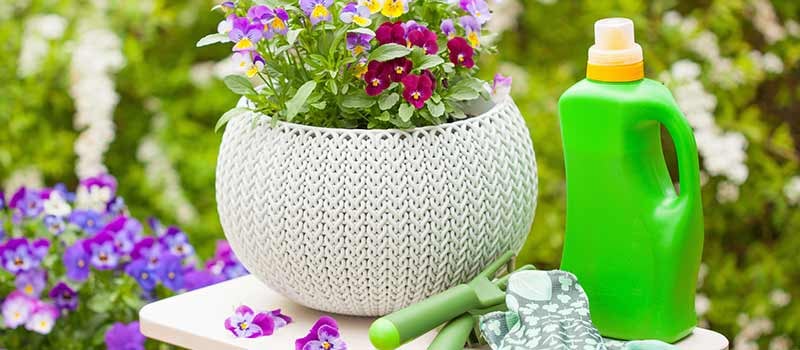
9. Fertilizer & Plant Food
The success of any garden hinges on the soil quality. Healthy soil improves plant health, deters pests and diseases, and improves flower and fruit production.
Most gardeners can use fertilizer to boost soil health. When selecting a fertilizer, look at the three numbers on the bag. The first number represents the percentage of nitrogen in the bag, the second refers to phosphorus, and the third number is the amount of potassium. Most vegetables will do best with a balanced fertilizer—something like 6-6-6.
Or you can improve your garden’s soil by mixing 3 inches of Miracle-Gro® All Purpose Garden Soil into the top 6 to 8 inches of your existing soil to help increase fertility and drainage.
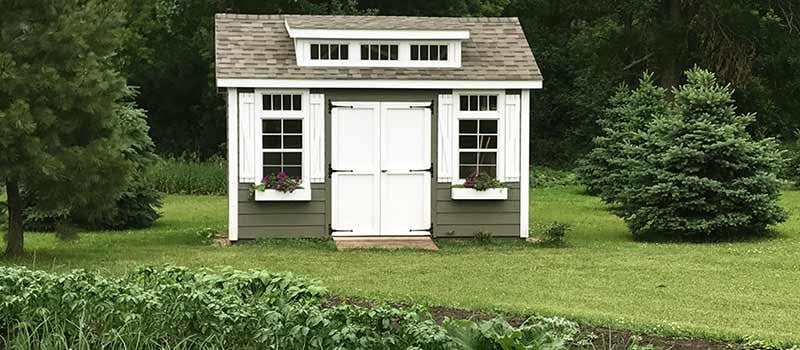
10. Garden Shed
One of the foundational essentials for every gardener is a good garden shed. Having a place to keep all of your tools and supplies and a convenient central workplace can make your time in the garden more enjoyable.
Our Garden Shed is perfect for all gardeners who need a small-to-medium-sized space. This high-quality shed is designed with gardening hobbyists in mind. It includes the square footage and features necessary for storing gardening tools, supplies, starter pots, fertilizer bags, hand tools, and all of your other gardening gear in a secure and dry place.
This shed comes with a built-in workbench, a versatile storage system designed to utilize the vertical space between 16" on center studs, moisture-resistant flooring, and a sturdy aluminum ramp. Plus, you can customize the size, siding, and color to match your home or fit your aesthetic.
Our Garden Shed XL meets the same need as our standard Garden Shed — it's just larger and comes with a few more features, including a second door and built-in loft.
We care about helping you organize your life, assisting you as you look for the best solution for your needs, and making the purchasing process as easy as possible. If you have questions about our garden shed options or which size is best for your needs, please contact our team.
Related posts:



